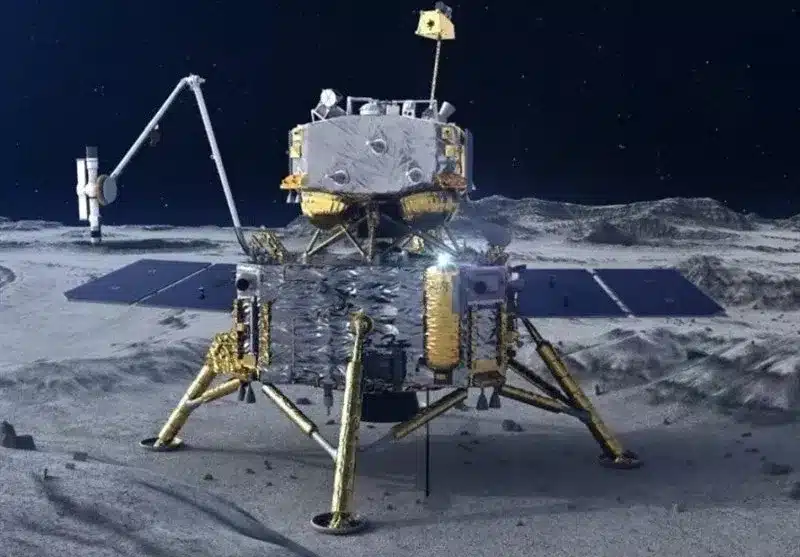About Chang’e-6:
- The Chang’e-6 craft successfully landed in the South Pole-Aitken Basin on the back of the moon.
- It is the first human sampling and return mission from the far side of the moon for the first time.
- It was launched by a Chinese Long March-5 rocket from Wenchang Space Launch Center on the southern island of Hainan before 53 days.
- Chang’e-6 consists of an orbiter, a returner, a lander and an ascender.
- The lander was equipped with multiple sensors, including microwave, laser and optical imaging sensors which can measure distance and speed, and identify obstacles on the lunar surface.
- The probe is scheduled to complete sampling within two days. It has adopted two methods of moon sampling, which include:
- Using a drill to collect subsurface samples
- Grabbing samples on the surface with a robotic arm.
- It has achieved a breakthrough in the design and control technology of the lunar retrograde orbit and aims to realize key technologies of intelligent and rapid sampling.
- It marks the second time a mission has successfully reached the far side of the moon. China first completed that historic feat in 2019 with its Chang’e-4 probe.
Q1: What is retrograde motion?
Retrograde motion, in astronomy, actual or apparent motion of a body in a direction opposite to that of the (direct) motions of most members of the solar system or of other astronomical systems with a preferred direction of motion. As viewed from a position in space north of the solar system (from some great distance above the Earth’s North Pole), all the major planets revolve counterclockwise around the Sun, and all but Venus and Uranus rotate counterclockwise on their own axes; these two, therefore, have retrograde rotation.
Source: China makes historic landing on far side of the moon
Last updated on November, 2025
→ Check out the latest UPSC Syllabus 2026 here.
→ Join Vajiram & Ravi’s Interview Guidance Programme for expert help to crack your final UPSC stage.
→ UPSC Mains Result 2025 is now out.
→ UPSC Notification 2026 is scheduled to be released on January 14, 2026.
→ UPSC Calendar 2026 is released on 15th May, 2025.
→ The UPSC Vacancy 2025 were released 1129, out of which 979 were for UPSC CSE and remaining 150 are for UPSC IFoS.
→ UPSC Prelims 2026 will be conducted on 24th May, 2026 & UPSC Mains 2026 will be conducted on 21st August 2026.
→ The UPSC Selection Process is of 3 stages-Prelims, Mains and Interview.
→ UPSC Result 2024 is released with latest UPSC Marksheet 2024. Check Now!
→ UPSC Prelims Result 2025 is out now for the CSE held on 25 May 2025.
→ UPSC Toppers List 2024 is released now. Shakti Dubey is UPSC AIR 1 2024 Topper.
→ UPSC Prelims Question Paper 2025 and Unofficial Prelims Answer Key 2025 are available now.
→ UPSC Mains Question Paper 2025 is out for Essay, GS 1, 2, 3 & GS 4.
→ UPSC Mains Indian Language Question Paper 2025 is now out.
→ UPSC Mains Optional Question Paper 2025 is now out.
→ Also check Best IAS Coaching in Delhi

















